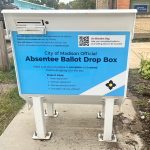Potential Changes to the RFP Process
Milwaukee should explore how land sales are managed in order to achieve the highest and best use. If Milwaukee can become better at converting land from public and vacant to private and developed it will only be a benefit to the entire city by building a better urban fabric and raising the city tax base.
Currently land sales in Milwaukee, be it those executed by the state, county, or city, don’t allow for speculation and restrict developer freedom with the current purchase options/request for proposal process. The process currently in place is designed to protect the interests of the city and to attempt to create a level playing field for developers. It succeeds, sort of.
The current request for proposal (RFP) process involving publicly-held land works by announcing a request for development proposals, judging the replies, and granting a time-limited purchase option for the land to the winning party. The system is not without flaws. Submitting the proposals is burdensome for developers and requires a clear picture for the use of all of the land in the parcel before ownership is even granted. If a developer wins the option to purchase the land, there is very little control on their execution of the proposal. The option contracts also are often structured as such that the time component is virtually meaningless as they are frequently extended to avoid having to restart the process. The final large problem is that the process is slow and does not allow a market to form around the land as it would for private land.
The Changes
Applying more market principles to the RFP process might speed the transition from public and vacant to private and developed for publicly-held parcels.
The first of such adjustments should be to allow speculators into the market. With the current process, developers are effectively the only parties that can buy parcels with a requirement that a proposal be submitted first. By regulating the use of land with zoning the desired use can be created flexibly after the sale of the land. Zoning codes would need to become more detailed to include explicit minimums (and potentially maximums) along with use types to ensure that any development of the land benefits the area around it.
The third adjustment to the RFP process should be to enhance the time-limited option contracts currently created. Allowing speculators into the market has the danger of creating parcels that remain undeveloped for years, and a safe guard is needed. To encourage the ultimate goal of getting the land developed, contracts should be granted with yearly fees that grow annually.
A per square foot cost can be assigned to the land, so if a specular wishes to sell or develop a portion of a parcel they may. When the land is ultimately developed, the portion used should be paid for in full, instead of just the option cost. However, the amount paid on the option could be applied towards the cost of the land. This would allow higher option prices to be charged, while further enticing development the longer a parcel is held (coupled with the higher option costs each year). The price paid on the option will be able to exceed the actual cost of the land, encouraging the land to be developed or to let the contract lapse.
If a contract owner wishes to exit their obligations of the growing annual payments, they can simply sell their contract to another party or notify the land-holding agency that they wish to release their remaining contract options. This would allow partial development (to corresponding zoning codes) of a parcel, while not forcing other portions to remain undeveloped. To prevent the building of a structure by a developer and the failure to build any landscaping on small portions of the land remaining (which would then be released back to the government unit undeveloped), the contract would have to stipulate a minimum divided parcel size.
The Intended Effects
How would this change Milwaukee as it is now? In the past ten years the largest example of the RFP process has been the reclaimed land from the former Park East Freeway spur. While small border parcels are being infilled, almost all of the land that has come under the ownership of the county has remained undeveloped. Why? Simply the lots are too big.
Developers like Robert Ruvin, who win RFP option contracts, then struggle (or fail) to actually develop the land would be given options to reasonably scale back their projects by using less land (at less cost).
The state of Wisconsin Department of Transportation (WisDOT) will soon begin selling the parcels used during construction of the Marquette Interchange. Allowing them to use a more market-based approach would allow them to sell options on the land to private interests, begin to see a revenue stream immediately, and have private interests searching for developers.
If you’re questioning the possibly that such a plan allowing subdividing would work, look no further than the former Pabst Brewery. The Brewery Project stewarded by Joseph Zilber has successfully parceled off buildings that will create an entirely new neighborhood.






















I am assuming that you are mostly referring to the County’s RFP process, as the City has done a fairly good job with their RFP’s. For instance, they split the Beerline into many small parcels like you are suggesting…and are doing a similar thing in the Menomonee Valley, although not using an RFP process there.
While I see what you are getting at, the real problem with the RFP process is when a unit of government (ie, the County or the State) issues an RFP, and then accepts the proposal with the highest purchase price…giving no thought to how that proposal might fit into the neighborhood, meet zoning codes or if they have the ability to obtain financing.
If you really want to change the public RFP process, you would make sure that the purchase price isn’t the number one criteria…as the benefit to the community really comes later through increased tax base, jobs, etc. The City has been willing to negotiate on land sale prices in order to get a quality development because they treat the sale proceeds as extra money, whereas the County includes it as a line item in their budget.
You state that the system in broken in ‘Milwaukee’, yet you only talk about the failures of the county government to market their land in the Park East corridor. We don’t see the City of Milwaukee holding much land in the PE, because their regulations and experience have ensured a quick buildout.
It is foolish to think that if we allow speculators to bid up prices on land, we’ll get anything other than parking lots. With these parcels’ location near prime entertainment areas and the absense of a land value tax, there is little incentive for more than a parking lot unless a huge scale project is in the works. (see large parking lot bordering water st. and juneau)
The solution to the problem isn’t more convoluted regulations that could actually harm the corridor and the city. The solution is for the county to sell the land to the city of Milwaukee, an entity with a proven track record and the resources to successfully and quickly get the job done.
@MilwaukeeD
Good note on the Beerline, that’s a good example of how small lot sizes and multiple available parcels in an area encouraged a healthy number of proposals. Menomonee Valley has also been turning out quite well, because it’s well managed. Both examples of having talented people design lots that would be attractive from the get-go.
My concern is that it’s going to be too hard for other levels of government to judge the best proposal and they have an incentive to want to maximize their money.
What I am proposing is a way that allows other forms of government to continue to accept the highest price, give the city control though zoning, and ultimately allow the private market to bail out any stalled or nearly stalled plans (like some of the proposals in the Park East are). Basically to get all public land to act as private land as fast as possible so that there isn’t a huge amount of undeveloped public land in Milwaukee (which there is now).
By eliminating the proposal process where a developer faces an all-or-nothing risk, I think you would also encourage more developers to enter the market.
@Jesse
Yes, I didn’t mean the City of Milwaukee is failing at the moment. Would I say the original deal with the Park East wasn’t as good as it should have been (in terms of moving the land to city control)? Yes. I meant the RFP process is general is difficult and slow in a lot of its implementations, especially when it doesn’t involve corridors (like the new state land won’t).
You would ensure there couldn’t be parking lots with the zoning code applied to the land.
I also don’t think the prices for land would be raised. You would bid on what yearly rate you would pay for the land and what would the closing cost to transfer ownership would be. There would be substantial risk in that if the land was not developed you could not buy it, so you’re paying annually on money you will never get back once you’ve paid annual amounts equal to the closing cost of the land (say you’re fully vested after 5 years, but not developed, you’re losing money in year 6 as you’re being forced to overpay for the land or stop paying and give it up, which would quickly drive the land cost down as you tried to sell).
I’m proposing lessening the amount of red tape to build something by allowing the land to act more like private land. You can sell parts of your land and there isn’t a costly proposal process.
@Jesse,MilwaukeeD
I have no doubt that if the City were to manage all of the public lands, things like the Park East and the coming Marquette Interchange would function a lot better. The Department of City Development has proven to be quite competent. But the issue is getting control of that land, which is costly in the short-run for the city, and may force our leaders to burn political capital they don’t need to.
If we could get other levels of government a revenue stream quickly with a sale to a speculator, and the city could regulate the land through zoning as if it were private land (and knowing there is an incentive so it doesn’t stay empty forever), I think Milwaukee would have a solution that works for everyone without much hassle.